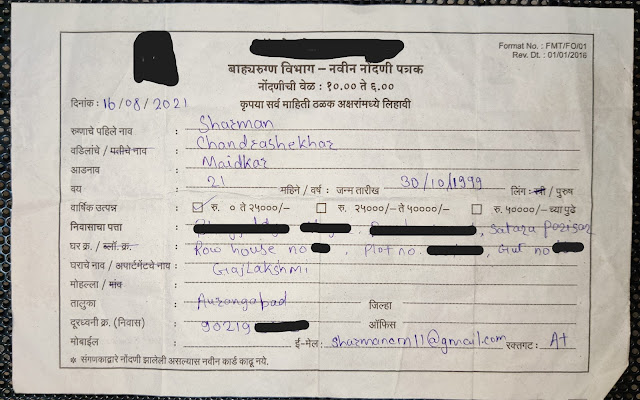The Doherty Threshold: Optimize System, Web, and App Performance for Happy Users
What is Doherty Threshold?
Performance is crucial when it comes to system, web, and application design. How fast a system or application runs can make all the difference in user experience. But what happens when a system or application is used beyond its limits? This is where the concept of the Doherty threshold comes into play.
The Doherty threshold is a concept that explains the maximum amount of performance that a system or application can deliver before it starts to experience diminishing returns. It is named after William Doherty, an electrical engineer who worked on developing amplifiers in the 1930s.
Imagine you have a car engine. When you first turn it on, it runs smoothly, and you can drive at a certain speed. However, if you push the car too hard, the engine will start to struggle, and the car will not perform as well as it should.
Productivity soars when a computer and its users interact at a pace (<400ms) that ensures that neither has to wait on the other.
The Doherty Threshold is the loop between the user and the device. The user acts, and the system responds, and based on that response user performs the next step. It takes the theory that the system, website, or tool can do it just as quickly to take the user on a further journey.
If the system's response time is higher than 400ms(0.4s), the user will shift his focus to something else. Users will end up not buying your product, not visiting your website, or searching for some other product or website that works faster / has a quick response time.
The faster, the better. The goal is to exceed user expectations.
Even a slight deviation will allow their attention to stray. The user will get up, do the dishes, pick up the remote, and watch the TV.
Loading time and response time affect the experience. The speed of your system, website, or tool can prevent someone from entering, purchasing, or taking action.
How to improve system, web, and application performance using the Doherty Threshold
A few things you can do to improve the speed of your system or site are:
Generally, looking at your system and website, how fast it is overall is not the goal here. The goal is to focus this on crucial interactions. Are they close to or under 400ms (0.4s)?
And this is not about fitting every component of your system or design under 400ms (0.4s). It is about understanding that this law can impact the usability or user experience.
The Doherty threshold identifies the maximum amount of performance a system or application can deliver before it starts to experience diminishing returns. Designers can use tools like load testing to determine the maximum performance capacity of a system or application. By staying within the boundaries of the Doherty threshold, designers can optimize performance and ensure that the system or application runs smoothly.
Real-World Examples of the Doherty Threshold
System design: Server capacity
The Doherty threshold can be seen in server capacity. Pushing a server beyond its maximum capacity can cause it to slow down or even crash, resulting in a poor user experience. For example, if an e-commerce website experiences a sudden surge in traffic during a sale, the server may struggle to handle the influx of requests. To avoid this, designers must ensure that the server capacity is optimized to handle peak traffic. By staying within the Doherty threshold, designers can ensure that the server operates at its maximum capacity without causing performance issues.
Web design: Image optimization
Another example of the Doherty threshold in action is image optimization for web design. If a website has too many high-resolution images, it can cause the site to take longer to load, which can lead to frustrated users. To optimize images and stay within the Doherty threshold, designers can use tools like compression to reduce the file size of it without sacrificing quality. By optimizing images, designers can ensure the website runs at its maximum capacity without compromising performance.Application design: Feature prioritization
The Doherty threshold also applies to application design. If an application has too many features, it can become slow and difficult to use, which results in users abandoning the app. To optimize performance and stay within the Doherty threshold, designers must prioritize the most crucial features and optimize the code. By streamlining its features and optimizing code, designers can ensure that the app runs at its maximum capacity without sacrificing performance.Let's take a look at Instagram. When you post an image or a video, you upload it first, add some effects, write a caption, tag people, and add a hashtag. While doing this, the image or video is already up on your profile. After you hit upload, the post will be visible to all.
Doherty Threshold in Audio Engineering
The Doherty threshold is a concept in audio engineering that refers to the point where an amplifier distorts the sound when pushed beyond its maximum capacity. Distorted sound becomes unpleasant and irritating, which negatively affects the user experience.
When designing products that use sound, it's crucial to ensure that the sound quality is optimized and doesn't become distorted at high volumes. The Doherty threshold is the point where an amplifier begins to distort the sound when pushed beyond its maximum capacity. As designers, we need to be mindful of this threshold to create products that sound great and provide a positive user experience.
For example, imagine a water pipe that carries water to your home. The pipe has a capacity, and if you turn on the tap too much, the water pressure becomes too high for it to handle, and water starts to sputter out of the tap. The same principle applies to sound in an amplifier. Increasing the volume beyond what the amplifier can handle, it becomes distorted and unpleasant.
To optimize sound quality and prevent distortion, audio engineers use a technique called gain staging. It involves adjusting the levels of different components in the audio signal chain to ensure the sound is clear and balanced. As designers, we can work with audio engineers to ensure that our products use gain staging to provide the best sound quality.
In conclusion, the Doherty threshold is a powerful concept that can help designers optimize system, web, and application performance. By understanding the maximum amount of performance that a system or application can deliver, designers can make informed decisions about optimizing their designs for maximum performance without compromising the user experience.
Whether optimizing server capacity, compressing images, or prioritizing features, staying within the Doherty threshold is essential for creating high-performance systems, websites, and applications. By using the Doherty threshold as a guide, designers can improve the speed, reliability, and overall performance, leading to happier users and a better user experience.
So if you're a designer looking to create high-performance systems, websites, or applications, keep the Doherty threshold in mind. You can optimize your designs for maximum performance and create designs that stand out in a crowded digital landscape.








Great post, many useful informations!
ReplyDeleteI didn't know Doherty Threshold, thanks for introducing me to that !
UI UX designer is crucial to just about everything. It renders the latest technology accessible to the masses, makes our favourite apps and websites a pleasure to use, and determines which brands and products we return to over and over again. To put it simply, design matters.
ReplyDelete